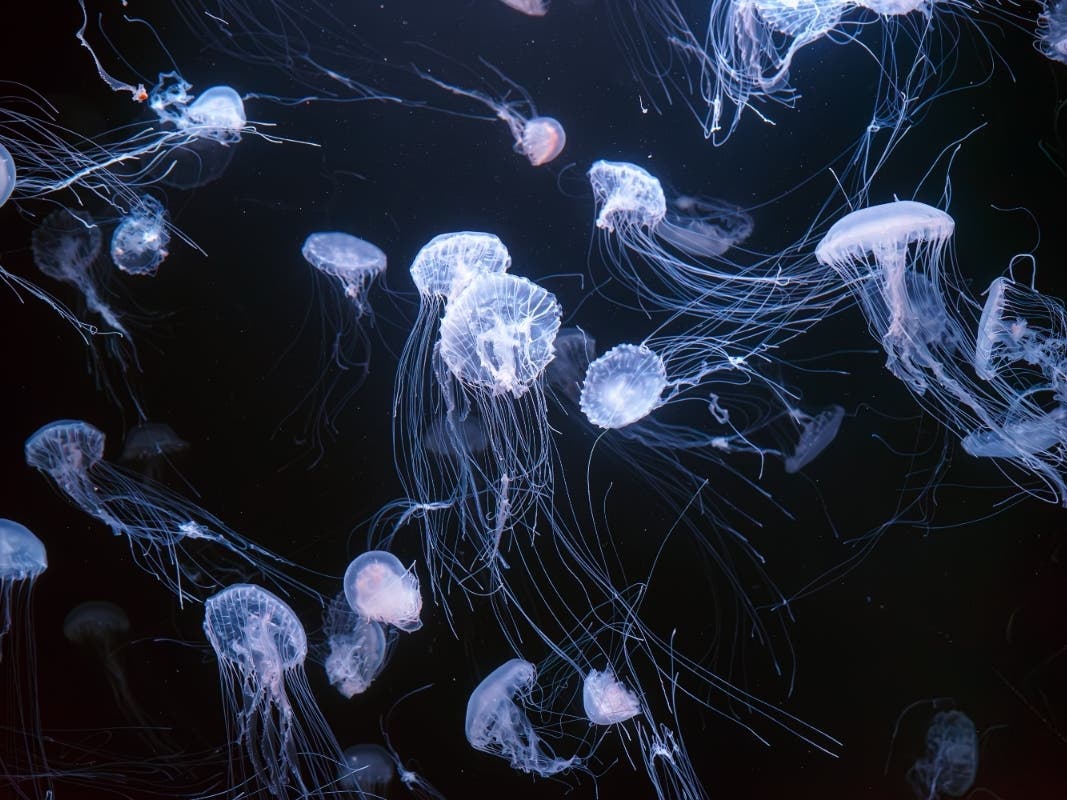Health & Fitness
How To Treat Jellyfish Stings In VA: 'Don't Let Your Friends Pee On You'
As many as 150 million jellyfish stings occur worldwide each year. Here's what to know about jellyfish in Virginia and how to treat a sting.

VIRGINIA — As summer heats up, many Virginians pack up their families and head to the Eastern Shore or another vacation destination to enjoy a day at the beach.
But amid the sun, sand, and waves, even the most perfect beach day comes with some risks. What happens if you're wading or swimming in the water and suddenly feel a burning, prickling or stinging pain on your arm or leg?
As many as 150 million jellyfish stings occur worldwide each year, according to the Cleveland Clinic. While jellyfish don’t intentionally sting humans, if you brush or accidentally step on one, it will sting to protect itself.
Find out what's happening in Fredericksburgwith free, real-time updates from Patch.
Most jellyfish stings are harmless; however, some stings can cause serious harm.
Here's what you should know about jellyfish in Virginia and what you should — and should not do —if you're stung.
Find out what's happening in Fredericksburgwith free, real-time updates from Patch.
Are There Jellyfish In Virginia?
Yes. Jellyfish are one of the more common animals encountered by visitors to the Chesapeake Bay and nearby coastal waters, especially during summer, according to the Virginia Institute of Marine Science.
The most common jellyfish and the one most responsible for stinging swimmers is the bay nettle. The bay nettle is milky white and looks like a disc-shaped bell. They grow up to 8 inches wide and some have reddish-brown stripes or splotches.
Other jellyfish found in Virginia include the moon jelly, lion's mane jelly, mushroom cap jelly, cannonball jelly, sea walnut, sea gooseberry and pink nose jelly. Learn more about each species online.
Jellyfish sting using their tentacles, which contain nematocysts loaded with spring-loaded barbed threads or tubules, according to the Cleveland Clinic. When triggered, jellyfish experience increased pressure inside the nematocysts. This causes the threads to uncoil and spring out like darts, firing venom into its victim. The entire process takes less than a second.
What To Do — And Not Do — After A Jellyfish Sting
Let's start with what not to do. First and foremost, urine is not the answer.
In a recent interview with WTOP, Amanda Joy, certified physician assistant and associate medical director at MedStar Health Urgent Care, said the peeing theory is a myth.
"Do not let your friends urinate on you. … We don’t need to be doing that," she told WTOP.
Other ineffective home remedies, according to the Virginia Institute of Marine Science, including treating the sting with alcohol, baking soda, a meat tenderizer or shaving cream.
What you should do, the agency suggests, is the following:
- Inactivate the tentacle discharge with a topical application of full-strength vinegar. Do not use water.
- Remove tentacles by plucking them with tweezers. Do not scrape or rub, which can cause additional release of venom.
- Immerse the affected area in hot water up to 113 degrees for 30-90 minutes.
- Pat the skin dry
- Apply a 4% lidocaine spray to the skin.
While allergic reactions are rare, they can occur. An allergic reaction can cause swelling throughout the body and potentially restrict the airway. If this happens, call 911 and use injectable epinephrine or an oral antihistamine.
Get more local news delivered straight to your inbox. Sign up for free Patch newsletters and alerts.